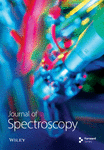Quantification of carbohydrates in fruit juices using FTIR spectroscopy and multivariate analysis
Abstract
A combination of Fourier-transform infrared spectroscopy (FTIR) and multivariate statistics was applied as screening tool for the quantitative determination of carbohydrates, such as glucose, fructose and sucrose, in 28 processed commercial fruit juices and 5 genuine juices obtained from squeezed fruits. A number of 13 mixtures of glucose, fructose and sucrose standard solutions were prepared at different concentrations, scanned by attenuated total reflectance (ATR) FTIR spectroscopy and analyzed in the 900 and 1400 cm−1 spectral range. Principal component analysis (PCA) of the standard carbohydrate solutions enabled a better understanding of the main sources of variability affecting the FTIR spectra. Also, PCA enabled the grouping of apple, orange and peach juices. Calibration models for each carbohydrate, using partial least squares (PLS) regression were developed and used for prediction purposes. Cross-validation procedures indicated correlations of 0.88, 0.92 and 0.98 for glucose, fructose and sucrose, respectively, between HPLC measured values and FTIR first derivative spectra estimates. Carbohydrates in the expected concentration ranges were found for most of the pure fruit labelled juices. The samples with 4–50% pure fruit juice content showed discrepancies from average concentration values of authentic juices, mainly a high sucrose concentration can flag sucrose addition to maintain the juice sweetness intensity. The present results confirmed the efficiency of FTIR spectroscopy, in combination with multivariate statistics, as a rapid, reliable and cost-effective tool for routine monitoring of multiple constituents in fruit juices, as quality indicators.




